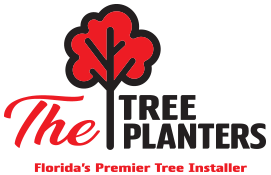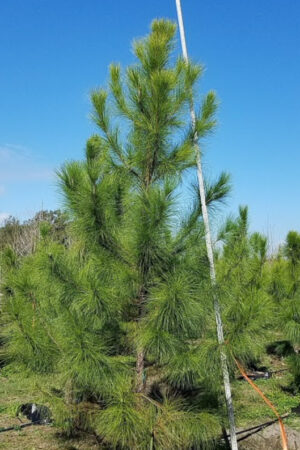SLASH PINE
Florida Slash Pine (Pinus elliottii) is a native evergreen conifer that plays a major role in Florida’s ecosystems and landscapes. Here’s a detailed overview:
✅ Appearance & Characteristics
Needles: Long, dark green, 6–12 inches, in bundles of 2 or 3.
Cones: Brown, elongated, 2–6 inches, favored by squirrels and birds.
Bark: Red-brown, deeply furrowed when young; becomes plate-like and scaly with age.
Form: Pyramidal when young, becoming open and rounded with age.
Wildlife Value: Provides food and shelter for birds, squirrels, and pollinators; host plant for Imperial Moth larvae. [edis.ifas.ufl.edu], [plants.ces.ncsu.edu], [gardenia.net]
✅ Size & Growth
Height: Typically 75–100 ft, sometimes up to 120 ft.
Spread: 30–50 ft.
Growth Rate: Fast—ideal for quick shade and windbreaks.
Lifespan: Long-lived (up to 150 years).
USDA Zones: 7A–11 (thrives throughout Florida). [edis.ifas.ufl.edu], [gardenia.net], [anwfl.com]
✅ Care & Maintenance
Light: Full sun.
Soil: Adaptable—sand, loam, clay; prefers acidic, well-drained soils but tolerates occasional wet conditions.
Water: Moderate; drought-tolerant once established.
Fertilizer: Apply granular fertilizer 3 times a year (spring, summer, fall).
Pruning: Minimal—self-prunes lower branches as it grows.
Spacing: Plant 10–12 ft from structures; allow room for roots.
✅ Salt & Drought Tolerance
Salt: Moderate—tolerates salty wind and occasional brackish flooding but not direct beachfront exposure.
Drought: High once established—excellent for low-maintenance landscapes.
✅ Landscape Uses
Shade Tree: Creates light, dappled shade—ideal for native gardens.
Windbreak & Reclamation: Used for erosion control and soil stabilization.
Wildlife Habitat: Supports birds, squirrels, and pollinators.
Naturalistic Planting: Best in groups for a “pine flatwoods” look; underplant with saw palmetto, wiregrass, and native wildflowers.
✅ Special Features
Varieties:
Pinus elliottii var. elliottii – Common in North/Central Florida.
Pinus elliottii var. densa – South Florida form; more fire-tolerant and adapted to limestone soils.
⚠️ Things to Watch
Pests/Disease: Fusiform rust, pine beetles, pitch canker.
Wind Damage: Mature trees may break in hurricanes.
Messy: Drops needles and cones—use pine straw as mulch. [plants.ces.ncsu.edu], [anwfl.com]

